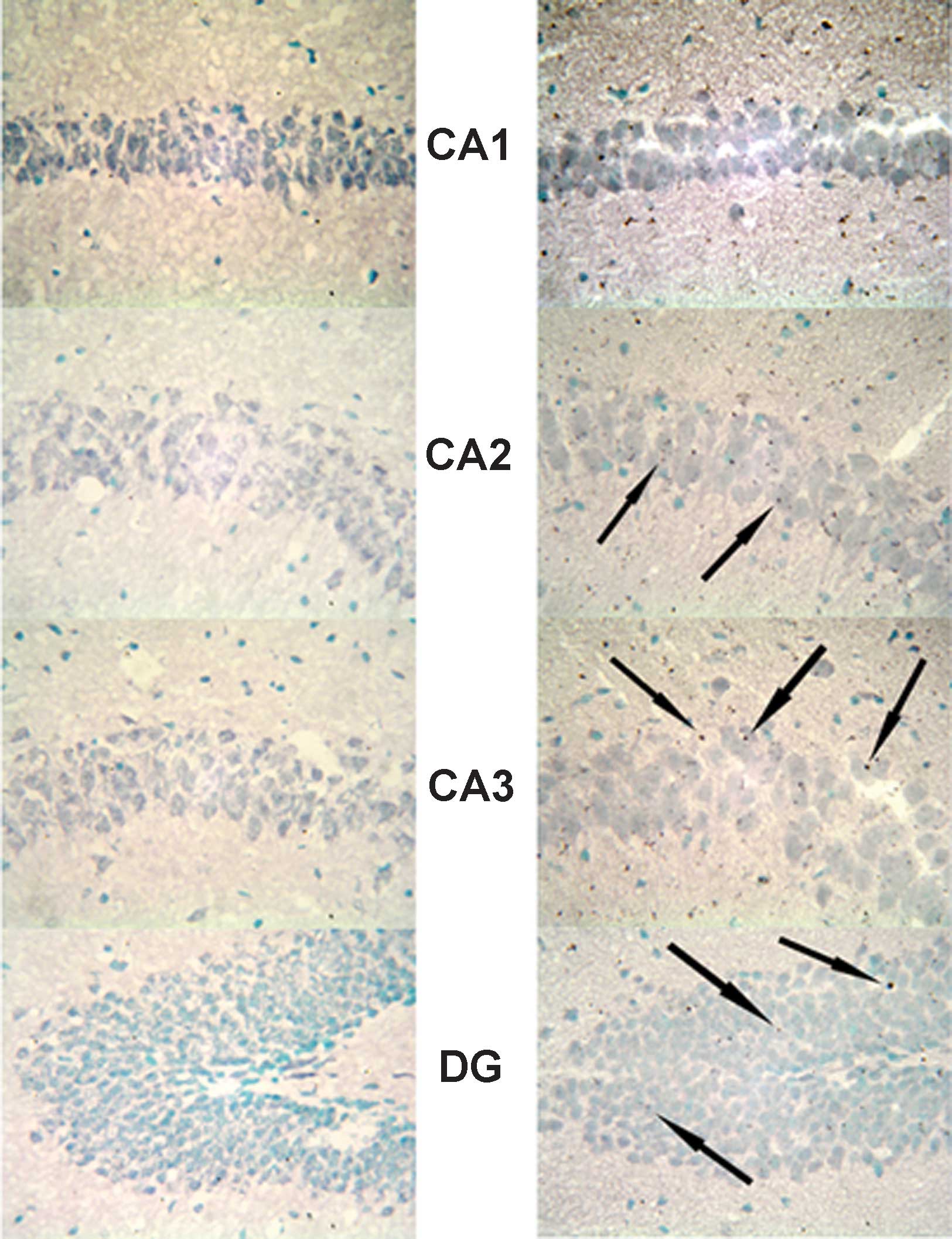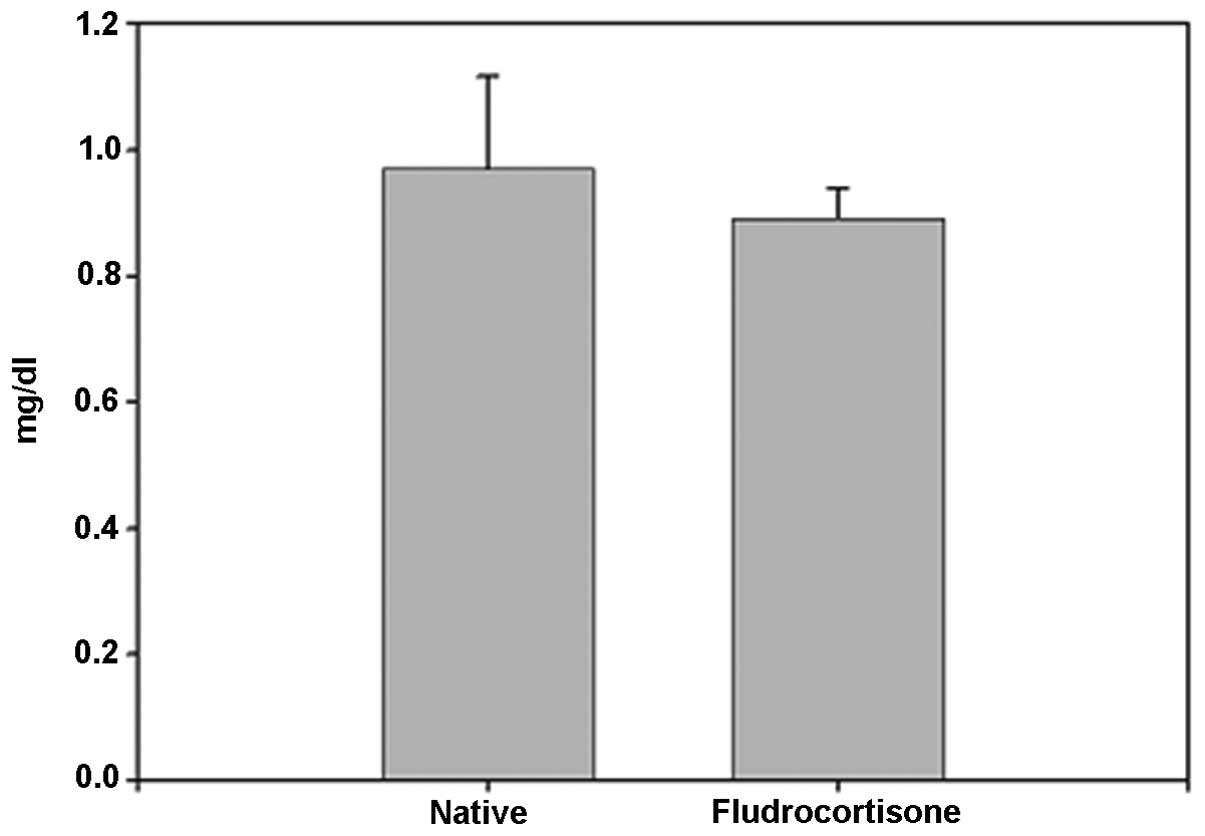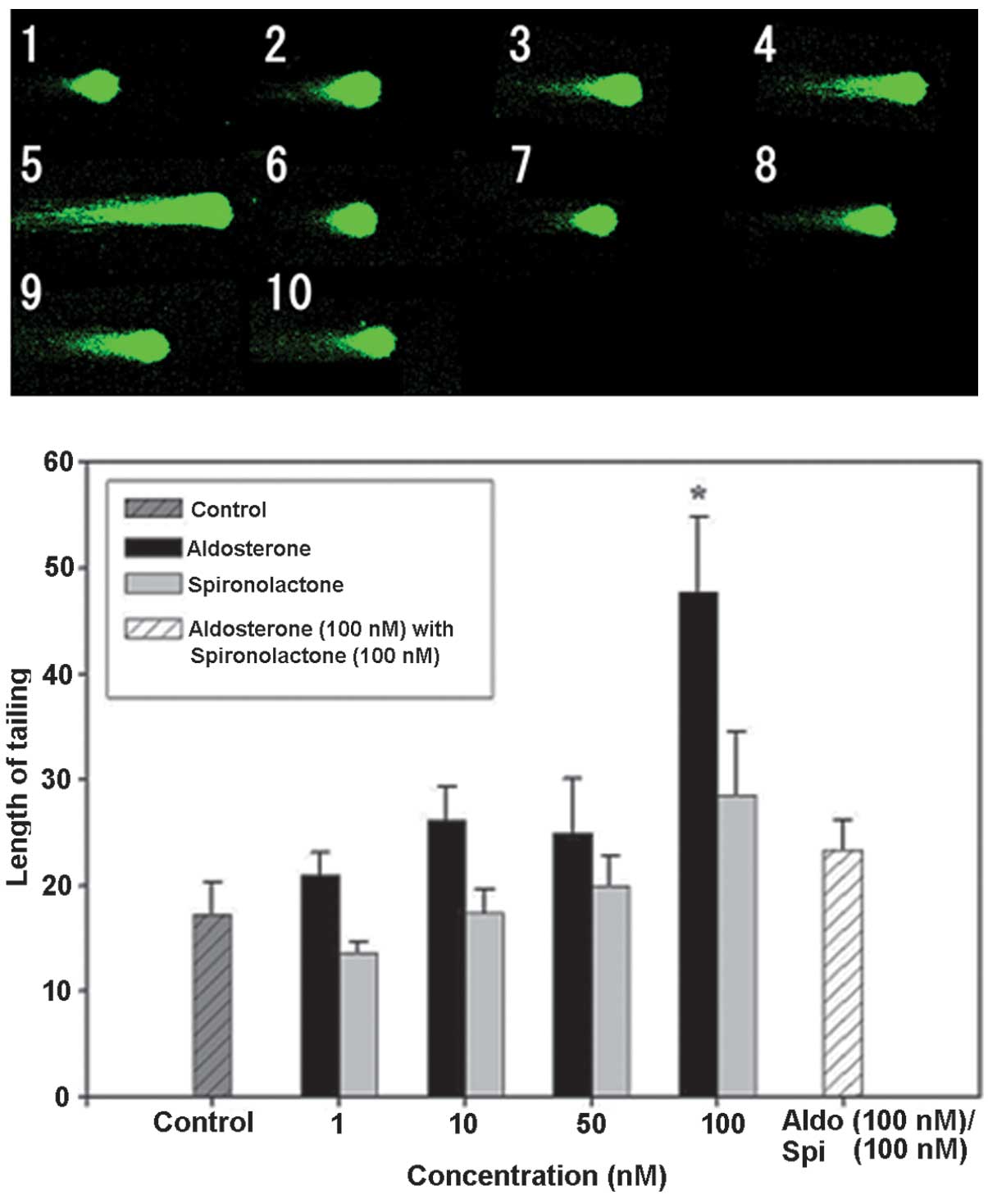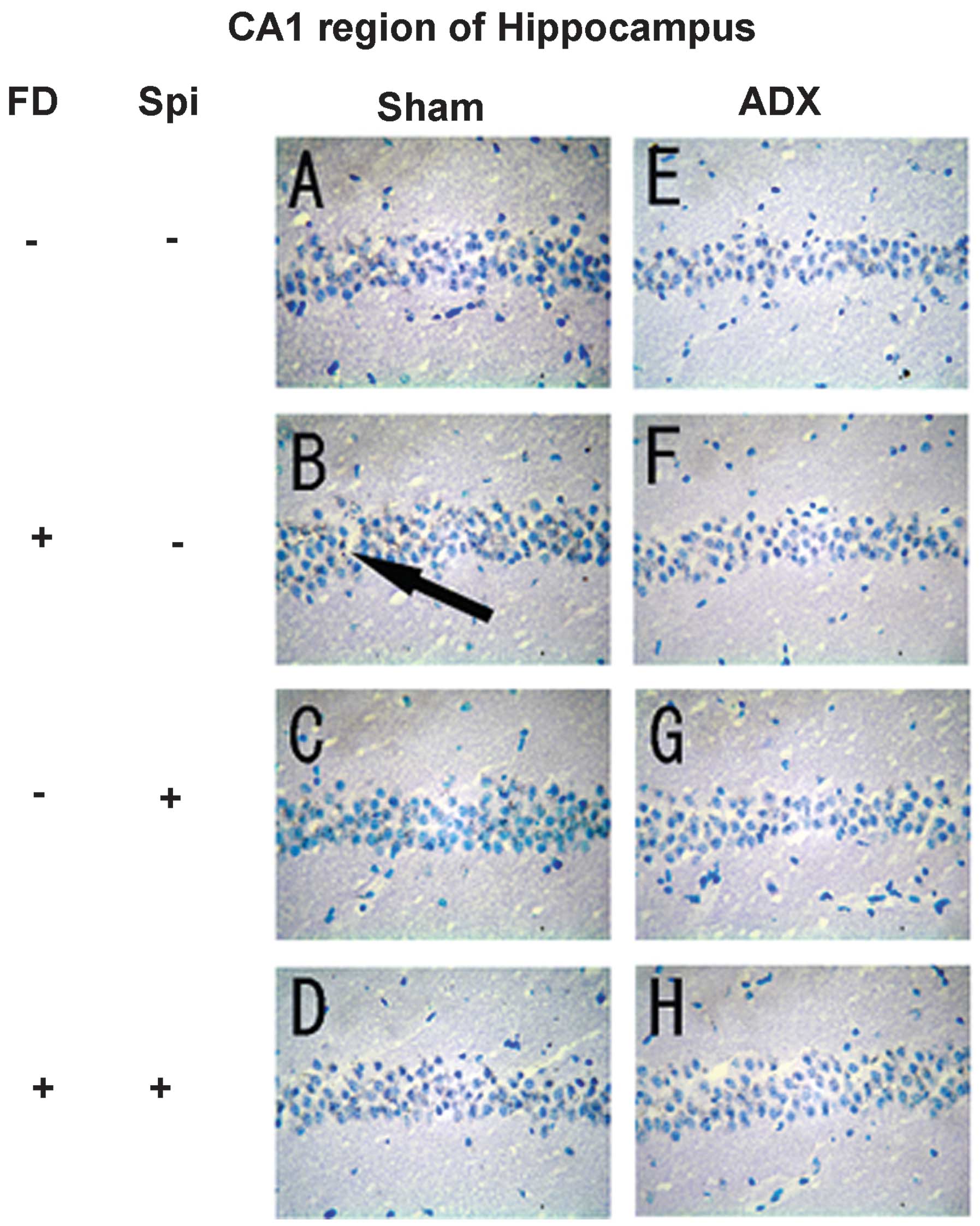Investigation into hippocampal nerve cell damage through the mineralocorticoid receptor in mice
- Authors:
- Published online on: October 1, 2015 https://doi.org/10.3892/mmr.2015.4406
- Pages: 7211-7220
-
Copyright: © Sasaki et al. This is an open access article distributed under the terms of Creative Commons Attribution License.
Metrics: Total
Views: 0 (Spandidos Publications: | PMC Statistics: )
Total PDF Downloads: 0 (Spandidos Publications: | PMC Statistics: )
Abstract
Stress‑associated neuropsychiatric disease is associated with glucocorticoid levels; however, the behavior of mineralocorticoid receptors (MR) under conditions of stress remain to be elucidated. Steroid receptors in the brain are classified into glucocorticoid receptors (GR) and/or MR, exhibiting a difference in affinity for corticosteroids. The hippocampus is one of the most stress‑susceptible regions in the brain. In the present study, it was investigated whether the two steroid receptors affect hippocampal neuron damage. The effect of fludrocortisones (FD) on hippocampal neurons caused by FD‑containing cholesterol pellets subcutaneously embedded in the backs of mice (FD pellet group, 80 mg cholesterol and 20 mg FD) was investigated. A significant extension of the tail length by ~2.22 fold was observed in the FD pellet group compared with that in the control group as elucidated via the comet assay. Cytotoxicity (pyknosis and degranulation) and DNA fragmentation due to the death of nerve cells were observed using Kluver‑Barrera staining and terminal deoxynucleotidyl transferase dUTP nick end labeling. Compared with the sham group mice, hippocampal neuron damage was observed in the adrenalectomized mice and the damage was suppressed by the combinatorial use of spironolactone, which suggested MR‑induced hippocampal neuron damage. In conclusion, the present study clearly indicated a regional difference in vulnerability and/or sensitivity to corticosteroids. MR sensitivity to corticosteroids was high in the CA3 region and pyramidal cells of the hippocampus, which may therefore be vulnerable to corticosteroids. Thus, it is clearly suggested that MR function is important in the stress response.
























